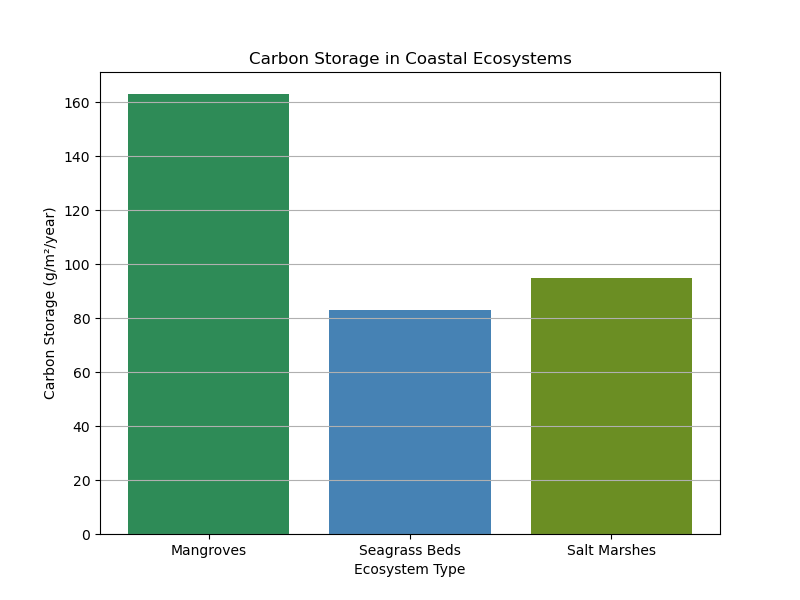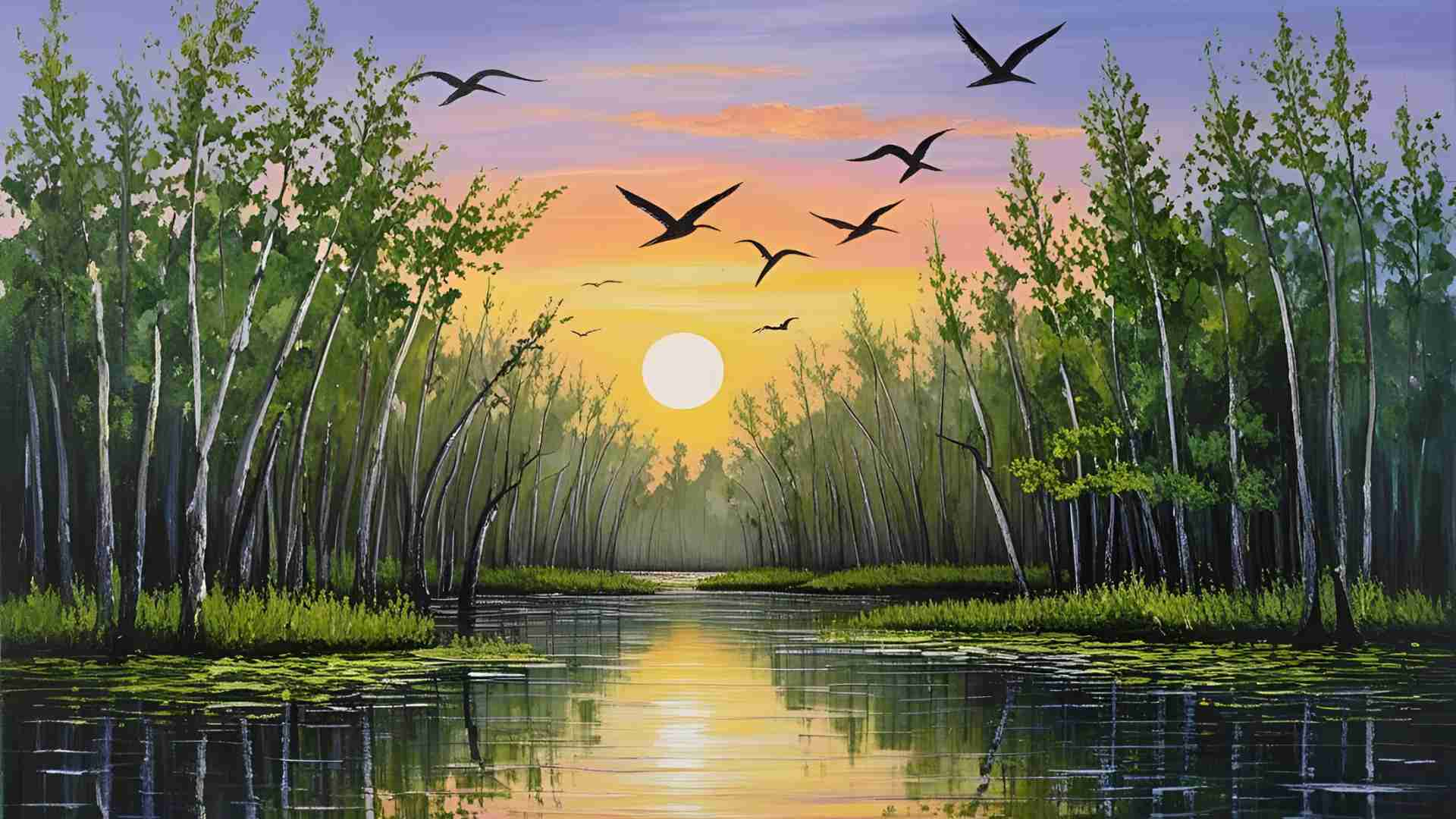Mangrove, the wonder of marine habitats
Discover the wonders of mangrove forests, vital marine habitats that support biodiversity, store carbon, and protect coastlines. Learn about their unique ecosystem, threats, and conservation efforts.
Mangrove forests are among nature’s most remarkable ecosystems, thriving in the challenging interface between land and sea. These salt-tolerant trees and shrubs create vibrant, biodiverse habitats that support a staggering array of life while providing critical services to both the environment and human communities. From sequestering carbon to shielding coastlines from storms, mangroves are indispensable in the fight against climate change and the preservation of coastal ecosystems. Yet, these vital habitats face significant threats from human activities and environmental changes. This article delves into the intricate world of mangroves, exploring their ecological importance, biodiversity, challenges, and the global efforts to conserve them.

The Unique Ecosystem of Mangrove Forests
Mangrove forests are defined by their ability to thrive in saline, oxygen-poor environments where most plants would perish. Found in tropical and subtropical coastal regions, typically between 25 degrees north and south latitudes, mangroves bridge terrestrial and marine ecosystems. Their specialized adaptations allow them to flourish in hot, muddy, and salty conditions, creating a unique habitat that supports an extraordinary diversity of life.
Adaptations for Survival
Mangroves have evolved remarkable adaptations to cope with their challenging environment:
- Salt Management: Mangroves handle high salinity through two primary strategies. Secretor species, like Avicennia (black mangroves), excrete excess salt through specialized glands in their leaves, often forming visible crystals. Non-secretor species, such as Rhizophora (red mangroves), block over 90% of salt from entering their vascular systems, preventing dehydration in saline conditions.
- Root Systems: Mangrove roots are engineering marvels. Unlike terrestrial plants with deep taproots, mangroves use shallow cable roots, prop roots, or pneumatophores to anchor in soft, oxygen-poor sediments. Pneumatophores, vertical roots with lenticel pores, act like snorkels, allowing oxygen exchange even when submerged. For example, Sonneratia pneumatophores can grow up to 10 feet tall, while Rhizophora prop roots arc above the water, providing stability and aeration.
- Viviparous Reproduction: Mangroves employ vivipary, where seeds germinate into propagules while still attached to the parent tree. These propagules float for days or weeks, carried by ocean currents, before lodging in mud to grow, avoiding competition with established trees.
These adaptations enable mangroves to create a stable, thriving ecosystem in conditions that would challenge most other species.
Global Distribution
Mangroves are found in sheltered coastal areas across the globe, covering an estimated 53,000 to 77,000 square miles. Major mangrove regions include the Sundarbans in India and Bangladesh, the coasts of Southeast Asia, East Africa, and the Americas. In Iran, Avicennia marina (Hara) dominates, covering over 27,000 hectares, primarily in Hormozgan province. The distribution is limited by temperature, with mangroves unable to survive prolonged freezing or extreme fluctuations. However, climate change is pushing their range poleward, encroaching on temperate wetlands, while introducing them as invasive species in places like Hawaii.
Biodiversity: A Thriving Hub of Life
Mangrove forests are biodiversity hotspots, supporting a complex web of interdependent species. Their intricate root systems and lush canopies create a mosaic of habitats for flora and fauna, many of which are unique to these ecosystems.
Flora of Mangrove Forests
Mangrove forests host approximately 54 true mangrove species across 16 families, with additional “mangrove associates” like Conocarpus erectus (buttonwood). Key species include:
- Red Mangrove (Rhizophora spp.): Known for prop roots that stabilize sediments and provide marine nurseries.
- Black Mangrove (Avicennia spp.): Features pneumatophores and salt-excreting leaves, thriving in high-salinity zones.
- White Mangrove (Laguncularia racemosa): Grows in less saline areas, with shorter flotation periods for propagules.
These trees, along with ferns like Acrostichum, create a dense, protective environment that supports diverse plant life.
Fauna of Mangrove Forests
The animal life in mangroves is equally diverse, with species adapted to the brackish, tidal environment:
- Birds: Mangroves are critical for birds like herons, egrets, and the endangered mangrove hummingbird (Amazilia boucardi), which feeds on Pelliciera rhizophorae nectar. Brown pelicans nest in Rhizophora canopies in places like Ecuador’s Galapagos Islands.
- Crustaceans: Mangrove tree crabs (Aratus pisonii) climb trees to feed on leaves and insects, while fiddler crabs use oversized claws for courtship and defense. Mud lobsters aerate soil with their burrows, fostering mangrove growth.
- Fish and Amphibians: Mudskippers, amphibious fish, navigate land and water, breathing through their skin. Juvenile fish, like rainbow parrotfish and Goliath grouper, use mangrove roots as nurseries.
- Mammals and Reptiles: The Sundarbans host Royal Bengal tigers, adept at swimming and hunting in mangroves. Proboscis monkeys in Borneo and spectacled caimans in Central America thrive among the roots.
- Insects: Bioluminescent fireflies in Malaysia create dazzling displays, while mangrove-specific insects like slug caterpillars add to the ecosystem’s complexity.
This interdependence ensures a balanced ecosystem, with each species contributing to the forest’s health. For example, crabs recycle nutrients by consuming leaf litter, while birds and bats pollinate mangrove flowers.
| Species Type | Example Species | Role in Ecosystem | Unique Adaptation |
|---|---|---|---|
| Tree | Rhizophora mangle | Stabilizes sediments, nursery habitat | Prop roots |
| Tree | Avicennia marina | Carbon storage, salt excretion | Pneumatophores, salt glands |
| Bird | Mangrove Hummingbird | Pollination | Feeds on specific mangrove nectar |
| Crustacean | Aratus pisonii | Nutrient recycling | Tree-climbing ability |
| Fish | Mudskipper | Predator-prey balance | Breathes air through skin |
| Mammal | Proboscis Monkey | Seed dispersal | Swims in mangrove waters |
| Reptile | Spectacled Caiman | Predator, nursery guardian | Thrives in brackish water |
Ecological and Human Benefits of Mangroves
Mangrove forests provide a suite of ecosystem services that benefit both nature and human communities, making them invaluable in coastal regions.
Coastal Protection
Mangroves act as natural barriers against storms, tsunamis, and erosion. Their dense root systems dissipate wave energy, reducing flood impacts and stabilizing shorelines. A 2024 study estimated that mangroves provide $855 billion in global flood protection. In areas where mangroves have been removed, such as in Bangladesh during the 1991 cyclone, storm surges caused devastating losses, underscoring their protective role.
Carbon Sequestration
Mangroves are among the most effective carbon sinks, storing 6 to 8 tons of carbon per hectare annually in their soils. Globally, they sequester 75 billion pounds of carbon per year, accounting for 10-15% of coastal carbon burial despite occupying less than 2% of marine environments. This “blue carbon” is stored in sediments, mitigating climate change by reducing atmospheric carbon dioxide.
Water Quality and Habitat Support
Mangrove roots filter runoff, trapping sediments and pollutants, which improves water quality for nearby coral reefs and seagrass beds. They also serve as nurseries for commercially important fish and crustaceans, supporting fisheries worth billions. For example, Malaysia’s Mantang mangrove forest sustains fisheries valued at $100 million annually.
Human Livelihoods and Cultural Value
Mangroves provide resources like wood for construction, tannins for leather, and medicinal compounds. Coastal communities rely on them for fishing, with mangroves supporting 32% of fishery landings in the Gulf of California. Ecotourism, including kayaking, birdwatching, and crab fishing, generates income and fosters conservation. In Madagascar, mangroves host unique “swamp lemurs,” attracting tourists and researchers.
Threats to Mangrove Forests
Despite their importance, mangroves are disappearing at an alarming rate, with 35-97 square miles lost annually between 2001 and 2012. Key threats include:
Climate Change
Rising sea levels and increased storm intensity challenge mangrove survival. In the Sundarbans, 71% of the coastline is retreating by 656 feet per year. A 2024 IUCN study found 50% of global mangroves at risk of collapse. Low genetic diversity, a legacy of past sea-level changes, limits their ability to adapt.
Human Activities
- Shrimp Farming: Responsible for 35% of mangrove loss, shrimp farms clear forests for ponds, releasing toxic waste that harms ecosystems. Thailand’s regulations have curbed new farm expansion, but damage persists.
- Coastal Development: Urbanization and agriculture, like rice and palm oil farming, replace mangroves, exposing coastlines to erosion.
- Pollution: Industrial runoff and waste contaminate mangrove habitats, affecting plant and animal health.
Invasive Species
Invasive plants like Spartina alterniflora in China and animals like nilgai in Texas threaten mangroves by competing for resources or consuming seedlings. In Hawaii, introduced mangroves disrupt native bird habitats.
Conservation and Restoration Efforts
Global and local initiatives are working to protect and restore mangrove forests, recognizing their ecological and economic value.
Global Initiatives
- Ramsar Convention: Designates wetlands like Iran’s Hara forests as internationally important, promoting sustainable management.
- UN Decade on Ecosystem Restoration (2021-2030): Led by UNEP and FAO, this initiative aims to scale up restoration, with mangroves as a priority.
- Mangrove Alliance: Targets a 20% increase in global mangrove cover by 2030, using tools like smartphone apps for monitoring.
- Blue Forests Project: Links mangrove carbon sequestration to global markets, funding conservation in Kenya and Madagascar.
Community-Based Conservation
Local communities are pivotal in mangrove conservation. In Ecuador, the “Socio Manglar” program incentivizes indigenous groups to protect mangroves by granting exclusive fishing rights for red mangrove crabs and black cockles. In Iran, despite legal protections, construction threatens wetlands like Khorbardestan Dayyer, prompting activism to halt development.
Restoration Techniques
Traditional restoration, like planting seedlings in mudflats, often fails, with survival rates as low as 20% in some projects. However, ecological restoration, pioneered by Robin Lewis, has proven effective. By modifying landscapes to optimize tidal flow, this method has restored mangroves in 25 countries, including Florida, Thailand, and Indonesia.

Case Study: Iran’s Hara Forests
Iran’s mangrove forests, primarily Avicennia marina (Hara), span 27,000 hectares along the Persian Gulf and Sea of Oman. Concentrated in Hormozgan province, these forests are protected as biosphere reserves and Ramsar sites. However, construction, such as shrimp farms and roads, threatens areas like Khor Azini, disrupting freshwater flow and bird habitats. Community activism and legal protections aim to preserve these vital ecosystems.
The Path Forward
Mangrove forests are nature’s multitaskers, supporting biodiversity, mitigating climate change, and protecting human communities. Their loss would have catastrophic consequences for coastal ecosystems and economies. By supporting global initiatives, empowering local communities, and adopting effective restoration techniques, we can ensure mangroves continue to thrive. Safeguarding these wonders is not just about preserving nature—it’s about securing a resilient future for our planet.
For more information, contact:
- Steven Lutz, Blue Carbon Lead, GRID-Arendal: Steven.Lutz@un.org
- Isabelle Vanderbeck, UNEP, GEF Blue Forests Project: Isabelle.Vanderbeck@un.org
- Tim Christophersen, UNEP, Ecosystem Restoration Decade: Tim.Christophersen@un.org
Happy Boating!
Share Mangrove, the wonder of marine habitats with your friends and leave a comment below with your thoughts.
Read Exploring the Wonders of Estuaries until we meet in the next article.






